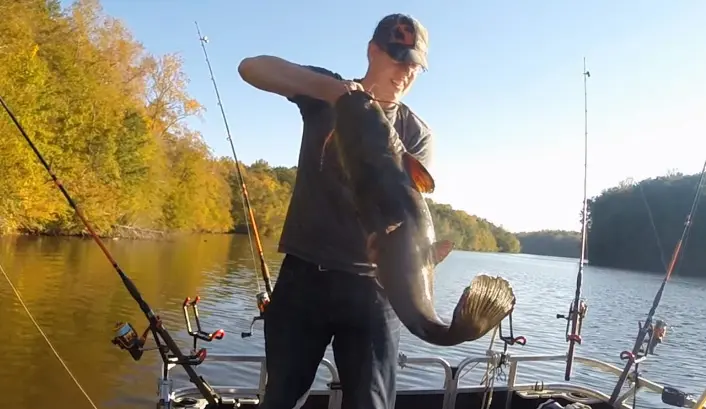The Best Times to Go Catfishing
Catfishing changes depending on the water temperature of rivers, lakes, and ponds. Different species of catfish such as Blue, Flathead, and channel are best caught during specific seasons of the year. To increase success all year long, one should focus their efforts on specific species of catfish, their seasonal movements and habitat preferences.
Catfish avoid sun rays and prefer to stay in a calm, covered, and shaded area for protection. They won’t mind warm waters too. One can snag into large catfish on rivers during morning hours while they feed from the night before. At night, they move toward more shallow covers for feeding. Here are four of the best times that you can go catfishing.
Winter

The blue catfish is best caught during this season. It’s biologically influenced by chilly environments that encourage them to make large-scale movements and shifts to seasonal habitats. Besides, they’re not immune to the cold.
They continue to feed even when their metabolism and digestion rates slow. During winter, channel catfish hide in deep wintering holes downstream, especially those with some cover.
Winter is an excellent time for catching big monster trophy blue catfish or the small catfishes. Despite the difficulty involved in raising channel cats, it’s easier to catch them in large groups concentrating in wintering areas.
There’s a variety of options that’ll give you excellent action like fishing for blue cats in deep and shallow waters along with cormorant catfishing. Catfishing is best done between June and September before the beginning of spring.
Spring

Spring brings about a rise in water temperatures and catfish population during early season fishing. The best catfishes caught are the Blue and Flathead catfish. Warm water activates catfish by increasing their metabolism and feeding habits.
The warm spring weather always puts the Flathead catfish in a feeding frenzy to add lost winter weight and getting it ready for spawning.
Change in water temperatures scatters fish until an optimum temperate condition is achieved when their locations become consistent. Sections found below dams, riffles, and other channel structures make great fishing zones since channel catfish tend to move upstream. Fishing of Blue and trophy class catfish is best done in late March, April and early May.
Summer

In the summer months of December to March, catfish are the last to spawn. Fishing during spawning can be difficult, especially when targeting Blue and Flathead catfish. Channel catfish are best caught in excellent numbers when spawning and offer some fast-paced action.
In rivers and streams, channel catfish often move downstream to get more food only if their habitat and food encourage their movement. Channel catfish will likely hold the fort on a cover or structure in high and strong summer flows. Conversely, cats may take cover in deep holes when the channel has extremely low water.
During summer, high waters often usher fish closer to the banks and along with inside bends. The biggest channel cats hang toward the outer wood edge when catching fish above tree piles. In big rivers, channel cats are often found around bridge abutments, wing dams, barge mooring areas and structures that break the current while offering food and cover.
Fall

As temperatures start to fall in mid to late October, water temperatures stabilize and catfishing quickly picks up with not only excellent numbers of catfish being caught but big trophy class catfish.
Fishing for blue and channel catfish is excellent during fall, while Flathead cats go into a feeding frenzy as they prepare to bulk up adding extra weight to carry them through the long winter.
During late fall, catfish vacate shallower areas and move downstream to the deeper sections of the mainstream rivers. Various techniques can be used in fall such as drift fishing, a popular way for anglers to catch blue and channel catfish. Cormorants often show up in mid to late fall and splat fishing produces not only excellent action but trophy class catfish as well.
Conclusion
Catfishing is good all year long and targets all catfish species and sizes. One should focus their efforts on specific species of catfish, their seasonal movements and habitat preferences. The channel catfish is best caught during summer from pre-spawn until the water temperatures begin to drop.
The blue catfish is best caught during spring and at the close of fall when temperatures begin to stabilize. Fall is the best season to catch flathead catfish since the fish are feeding heavily as they prepare for winter. To catch the biggest channel cats, consider winter and locate the fish in areas immediately below dams, riffles, and obstructive structures, which are good fishing zones.
